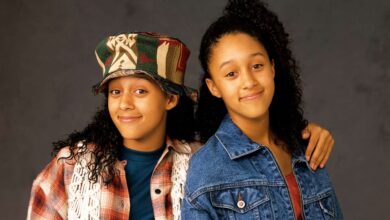Weather Experts on Hurricane Misinformation and the Sources They Trust
:max_bytes(150000):strip_icc():format(jpeg)/map-hurricane-wilma-090825-571cb89372cb42bb8906610fdb0ec0eb.jpg)
NEED TO KNOW
- Meteorologists John Morales and Todd Gross are speaking with PEOPLE about misinformation circulating on social media about hurricanes and forecasting
- “It is easy to spread lies today, much easier than it was before smartphones and social media platforms were invented,” Morales says
- Additionally, the experts are opening up about how forecasting works and all the problems with just getting storm information through social media
Social media is rife with misinformation and falsehoods about weather forecasting — especially during hurricane season.
Now, PEOPLE is speaking with seasoned weather experts about how hurricane forecasting works, problems that social media users face when getting their information on the internet and how to access the most accurate information — including in online spaces.
“It is easy to spread lies today, much easier than it was before smartphones and social media platforms were invented,” says John Morales, a hurricane specialist for NBC affiliate WTVJ who has also worked for the National Oceanic and Atmospheric Administration (NOAA) and the National Weather Service (NWS). “Everybody has a bullhorn, which was not the case in the past.”
Todd Gross, a New England-based meteorologist who was portrayed by Christopher McDonald in the award-winning film The Perfect Storm, is particularly familiar with the problems social media is causing in the weather world — as he actively creates weather content on TikTok.
“When [weather content] is put in the hands of irresponsible people, then it just blows that problem way out of proportion,” he explains.
MIGUEL J. RODRIGUEZ CARRILLO/AFP via Getty
How hurricane forecasting works
Hurricane forecasting begins with hurricane monitoring, according to Morales, who has spent more than four decades as a meteorologist. “We have to know what’s out there, and that starts all the way back when it’s not even a hurricane,” he explains.
There are several ways to monitor for hurricanes, Morales says, including satellites, radar, ship reports and weather observations. Many of those observations then get fed into computer-based forecast models, which Morales says “have greatly improved over the decades” as science and technology have advanced.
However, forecasters “still struggle somewhat” with forecasting the intensity of storms.
Models can only offer accurate predictions up to a certain point, too. Morales and Gross say the accuracy of forecasts quickly diminishes around five days out. Computers do allow for models to predict beyond that, but those predictions are not nearly as accurate.
That is why hurricane forecasting utilizes what is known as the “cone of uncertainty,” which only extends for five days. The cone increases in size each day, to account for the errors in the forecast models that increase by the day.
Spaghetti charts are one of the most common tools used to predict the most likely path of a storm. The chart earns its name from the variety of different computer models shown on the graph with each possible storm path looking like a strand of spaghetti — and helps forecasters get a sense of what a storm’s most likely track may be. Outlying data points on the map are not fully discounted either.
“It’s going to make us think and it’s going to make us say, ‘Well, we cannot discount that possibility. It is a low chance, but we’re not going to discount that possibility.’ And that has improved our forecasting in great ways,” Morales explains.
Problems with social media and forecasting
Data from the Pew Research Center shows that the number of people who get their news from social media is rapidly increasing. However, that leaves many more people prone to forecasting and weather content that may not be as accurate as possible.
One problem, according to Gross, who has spent more than four decades as a meteorologist, is the drive to monetize content. This incentive pushes some creators to focus on more sensational content, rather than producing something accurate.
“They know that to get the views that they can actually get paid for, if they do something more dramatic … they know that that’s going to catch attention and that’s going to get folks to watch,” Gross explains.
“And when it’s put in the hands of irresponsible people, then it just blows that problem way out of proportion and it creates forecasts from people that aren’t even qualified to give those forecasts,” he adds.
NASA
One of the biggest keys to successful TikTok content in particular is creating a “hook” that grabs viewers’ attention instantaneously. Without one, content does not perform nearly as well as it could — giving weather creators more incentive to sensationalize their content.
Now, many creators will cherry-pick the most concerning data — like an outlying model in a spaghetti chart — and share it, oftentimes completely out of context, in hopes of making money. These kinds of posts help stoke unnecessary fear in users seeking legitimate information about a possible disaster.
“When it comes to things like that, just complete misinformation, that’s just unfair,” Gross tells PEOPLE, “because you’re creating anxiety and panic and you’re not getting the preparations where it needs to be.”
Gross also points out different users have different experiences on TikTok due to how the app pushes out its content. Some people get more accurate information while others see more sensational stuff, likely due to previous content they have interacted with.
Conspiracy content also helps fan the flames, which can cause people to seek out information on social media sites, though the information may not be as accurate.
Alejandro Granadillo/Anadolu Agency via Getty
Concerns with forecasting
Morales has covered some of the most devastating hurricanes to impact the U.S. over the last few decades — including Hurricane Andrew in 1992 and Hurricane Katrina in 2005.
Morales even referenced his coverage of Hurricane Dorian in a June 3 broadcast in which he warned viewers that, due to cuts at NOAA and the NWS made by the Trump administration, it may be more difficult to predict the strength and track of storms moving forward.
During the broadcast, Morales reminded viewers that he was able to confidently predict that the storm would turn away from the U.S. just before it had the chance to slam into the Florida peninsula. But now, he is less confident in his ability to do so.
Never miss a story — sign up for PEOPLE’s free daily newsletter to stay up-to-date on the best of what PEOPLE has to offer, from celebrity news to compelling human interest stories.
“You could mark me as concerned,” Morales tells PEOPLE. “I am not throwing the National Hurricane Center’s forecast out the window. Of course I’m not. I’m not throwing the ensemble forecast out the window. I’m not. But I’m certainly a little wary of [whether] they might be slightly more inaccurate than last year.”
Gross — who has also covered several major storms, including Hurricane Frederic in 1979, Hurricane Gloria in 1985 and of course, the “Perfect Storm” that absorbed Hurricane Grace in 1991 — also expressed concern about the recent cuts at both NOAA and the NWS.
Despite this, Gross also says the NHC and NWS “are still far superior to anything else that’s out there, in terms of reliability,” adding, “the defunding hasn’t really affected it to that extent yet by any means.”
HECTOR RETAMAL/AFP via Getty
Best place to find your information
Both Gross and Morales insist that the National Hurricane Center (NHC), a division of NOAA, is the best place to get the most accurate information about hurricanes.
“They’re so responsible there, that’s really the best bet,” Gross tells PEOPLE. “Social media is fine to learn about something perhaps, or see another angle, but you really need to go by what your local authorities are telling you and what the National Hurricane Center is telling you. There’s no conspiracy behind that, they’re just trying to save lives.”
The NWS is a great place to get weather information beyond hurricane forecasting, according to both Gross and Morales. They also encourage people to seek out local sources as well, from meteorologists on local television stations to local authorities, including police, fire and public works departments. Many of these sources can be found on social media, including TikTok.
In the meantime, Morales encourages social media users to “use common sense,” “think critically” and question everything they see on social media — especially weather content. “You can’t be lazy and simply depend on whatever was fed to you,” he explains, later adding, “If it sounds fishy, it probably is.”
Credit to Nypost AND Peoples



